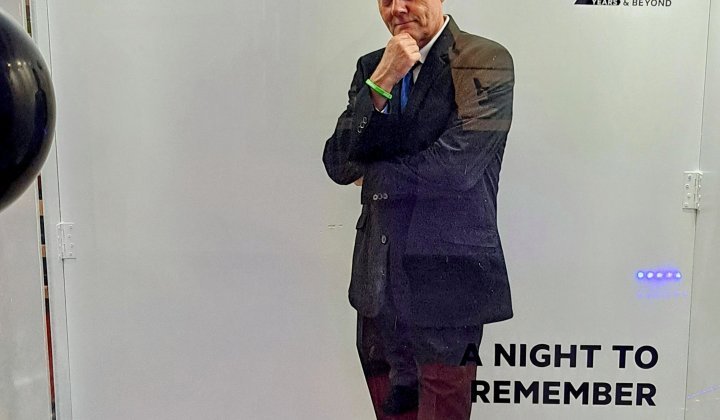A more transformational approach is emergent change, which puts changing what people think ahead of efforts to alter their behaviour. The latter is an unfolding approach, which asks leaders to trust in the process.
There is a range of emergent change methods, from open space technology to a world café approach, but the most popular is appreciative inquiry.
Open space technology is a method for running meetings or conferences which centres around an overall theme but then allows the conversation to flow naturally. World Café operates something like musical chairs with each table allocated a different topic of conversation.
Appreciative inquiry is a positive questioning approach that seeks to draw participants out and involve them in a process of change. The new ideas which emerge from such an intervention are not pre-determined by leaders as part of a strategic plan. Instead, leaders facilitate the process rather than hanging onto control, making emergent change uncomfortable for some.
I should know, as MD of New Concept Mining, a mine support technology firm, I participated in two appreciative inquiries. The results were transformative for both the company and me.
Mini case study: New Concept Mining
In 2015 we decided to institute an appreciative inquiry when our ‘world-class manufacturing’ initiative ended up being a set of graphs stuck on the factory wall rather than an engaging production process. After three years, the system, which had been proposed to us by a consultant and executed based on that input, wasn’t being used effectively by our factory workers and managers. They simply weren’t invested in the process. So we assembled 20 people and broached the subject using appreciative questioning. In other words, we asked for a positive association while still leaving room for criticism.
Going around the table, the first few answers were vague and stock-standard. However, the third or fourth person commented that since the process had begun, it hadn’t been necessary to employ a foreman from outside the company because they’d been promoted from within. This specific people development angle was noteworthy and, I freely admit, would not have occurred to me. The employees arrived at this conclusion themselves, and it shifted their view of the process. The intervention did more to change mindsets than would have been achieved if our leadership team tried to force behaviour change. And that built credibility.
An appreciative inquiry like this is very much a bottom-up process. It’s not about telling employees what to do, so the mindset shifts are deeper and the solutions suggested are wide-ranging and diverse. This has everything to do with the multi-level nature of the process, which helps break down natural barriers in an organisation and get people sharing and talking. This multi-level nature and self-driven approach is extremely powerful as it enables ideas to rise into the organisation, rather than the other way around. This, unsurprisingly, gets participants keyed up and motivated, far more so than if your initial question focused on negatives.
But it’s not all smooth sailing from here – having fostered trust during the process, leaders must be prepared to commit to seeing the intervention through to the end.
The all-important action steps
One of the key individuals behind this positive type of intervention is Dr. David Cooperrider, whom I was lucky enough to see in action during an appreciative inquiry for a large company in the United States.
Together with organisational behaviour expert, Suresh Srivastva, Cooperrider penned a seminal article in 1987 entitled Appreciative Inquiry in Organizational Life, which formed the foundation of this approach. Cooperrider consulted extensively to business, including this very transparent appreciative inquiry which I attended along with about 250 other participants. Involved in the process were the company’s employees and its customers, suppliers, and shareholders, which was very brave indeed. The company in question was Clarke, a provider of industrial-scale mosquito control products and services.
This intervention comprised more than 30 tables of people, all chomping at the bit to share their ideas. Because of the sheer numbers, Cooperrider limited the tables that could present to three, and people were standing on their tables, holding their flip charts aloft, to get a chance to speak. The energy was palpable.
A reason for this inspired response lay in the outcome of a previous appreciative inquiry during which the idea was mooted to build a new research lab that could be combined with the administration office. Based on that input, the owner of this family-run company invested in a new combined office and laboratory, which was designed pretty much to his employees’ specifications. As a result, people came into the second intervention with tremendous faith in the process.
What can go wrong?
Not all appreciative inquiries lead to this sort of enthusiasm and success, usually because top management doesn’t fully commit to rolling out the strategies and outcomes, thereby diminishing confidence in the process. For this multi-level and collaborative approach to work, it really needs the owner or the top manager to follow through. Without participative management, it is unlikely that decisions will be implemented.
It takes a brave leader to be led by their troops. It also requires a different outlook – a different type of leadership mindset – to facilitate the process.
While leadership is fundamentally about change, most leaders cling to the idea that they alone are the oracle. The leadership mindset required for effective emergent change doesn’t work this way; it acknowledges that the situation is too complex for one person or top leadership team to tackle and that input is required from across the organisation.
The good news is that once leaders are open to change and listen to different perspectives, both small and large institutions can use an emergent change approach. Cooperrider, for instance, ran an appreciative intervention for the United Nations, and large church groups and education departments have also successfully deployed this approach. So, while it may be more natural for smaller, more flexible companies to go through this sort of process, it probably has more impact and value for bigger companies with more complex and traditional operating structures.
What happened at New Concept Mining?
With that in mind, let’s return to our mini case study. We established a panel that comprised four senior people, including myself, and we made ourselves available to the intervention teams should they wish to present ideas. This process went on for a few years after the appreciative inquiry. The panel was deliberate in supporting as many of the ideas raised as possible to drive a broader culture change. As a result, ideas that were not necessarily the current priority for top management, such as buying a 3D printer for the research and development team, were agreed to. This showed intention on the part of leadership. It showed teams were being listened to and plans executed, which ultimately helped shift the company from its autocratic roots into an organisation with a more empowering and collaborative culture.
That’s what happens when organisational change interventions stop telling people what to do or how to change their behaviour and, instead, encourage everyone – including the MD – to sit down with colleagues to share and learn and, in the process, to shift mindsets on all sides.
How to conduct an appreciative inquiry
- Start by outlining a topic based on issues that are coming up in the business.
- Participants, including leaders, should then pair off with a colleague they don’t know well to talk through their answer to the affirmative question. An affirmative question is designed to initiate a positive response, such as asking: what do you value the most about how we work as a team?
- These pairs then come together in the bigger intervention group to discuss the themes that emerged from these one-on-one discussions.
- Once you have a list of themes, participants can select what they would like to work on. It should be something they are motivated about, which doesn’t have to be tied to their role or area of expertise. You might find an HR person with a passion for IT, for example.
- Participants split into teams to work together to formulate projects to put these strategies into effect.
Five steps to emergent change
Emergent change is often termed dialogic organisation development. It is an approach that focuses on helping embed change in an organisation by seeking out input from multiple voices. Broadly speaking, there are five steps to achieving emergent change:
- Frame adaptive challenges. This is where the leader comes up with a general concern, perhaps a loss of market share. As a result, the leader might frame an adaptive challenge asking, “When did we really have satisfied customers?”. This broad question is the starting point.
- Encourage new ideas that challenge the status quo. Having identified the adaptive challenge, the CEO might organise an invention or start informally talking to people and listening to their ideas.
- Enrich networks so people with similar ideas can support each other. Once themes start to emerge, the next step is to group people interested in those themes to take them further and build off one another. The aim is for them to self-initiative action plans.
- Nurture and allocate resources to initiatives that show promise. The leader will assess which interventions are making a difference and then allocate resources to some initiatives to nurture those with promise and scale-up others that are working.
- Scale-up and embed worthwhile initiatives. Finally, it’s about the leader guiding the process and letting the ideas bubble up. Yes, the CEO will ultimately still hold power and the purse strings, but if this is done genuinely, the leader can create a motivating situation that encourages participation.
Four key takeaways
- Planned change, a diagnostic, top-down approach, still has a place in a leader’s tool kit, particularly when dealing with less complex, technical problems where cause and effect relationships are identifiable.
- In complex environments where cause-effect relationships are not well understood, an emergent approach has been proven to be more effective.
- The role of the leader in an emergent change process is to facilitate the process rather than determine the strategic content.
- As part of the broader emergent change approach to organisational change, appreciative inquiry is a collaborative intervention that requires leaders to commit to the process and support shared outcomes.
Dr. Philip Maxton is a research associate at GIBS, where he undertakes qualitative research in organisational change and entrepreneurial leadership. Maxton, a GIBS alumnus, was awarded the 2016 Emerald/EFMD Outstanding Doctoral Research Award for his doctoral thesis. He is the founder and CEO of consultancy, Agilis Group, a director at digital strategy firm, Anora Technologies, and a former executive chairman and MD of New Concept Mining, a company focused on delivering mine support technology.




